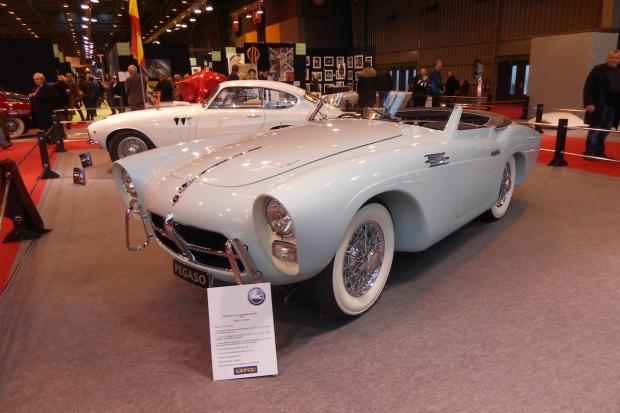
Rétromobile, as ever, was the best use of a trip to Paris that can be imagined. This year, the lure of the French event was especially strong, not least the last chance to see the incredible Baillon collection before it was broken up to be restored (or rebuilt from scratch in most cases) or to become garden ornaments. Not surprisingly, the barnfind phenomenon of the century so far was the star of the show, brilliantly displayed in its own hall, with at times huge queues to get in to see it.

It almost made me feel sorry for some of the other displays that, in any other year, would have been the talking point of the event. Gathering three vast Bugatti Royales (from La Cité de l'Automobile/Schlumpf Collection in Mulhouse) was no mean feat, while Corrado Lopresto's eclectic selection of multiple concours-winning Italian exotica and weirdies was a huge talking point. Oh and there was a Tiger tank, too.

All of which made me feel even more sorry for my favourite special feature, though, because not only did it have those others to contend with, but it was hidden away at the very end of the furthest hall and was definitely experiencing less footfall (that's a fancy word that exhibitions people use) as a result.
I suppose it doesn't help when many of your exhibits look quite similar, either, but for wow factor alone, seeing 12 Pegasos in one place was the highlight of the trip for me.

It's not just that the elite Spanish supercars have such a mystique about them, but that the Rétromobile display accounted for more than 10% of total car production by ex-Alfisti Wilfredo Ricart's state-owned truck-building conglomerate with such strong links to its pre-war equivalent, Hispano-Suiza. Not only was parent company Enasa founded in 1946 using the old Hispano factory in Barcelona and its assets, but its first truck was built on a Hispano chassis.

Story has it that Ricart was gunning for Enzo Ferrari who once said that the Spaniard wore thick-soled shoes to stop his brain juddering, and that producing Ferrari-beating supercars was always on his mind.
So it was that in the early 1950s Pegaso started to build cars… and what cars. Equipped with a five-speed transaxle – mounted behind the diff for better weight distribution – and an optionally supercharged quad-cam all-alloy V8 that allegedly made them the fastest cars in the world, the Z-102s were state of the art when they went into production in 1951 and the marque was still miles ahead of certain Italian manufacturers when the plug was pulled seven years later.

Yet the Pegaso was a failure on the race tracks and in the showrooms and even the introduction of the Z-103 boosted production by only another 26 cars.


